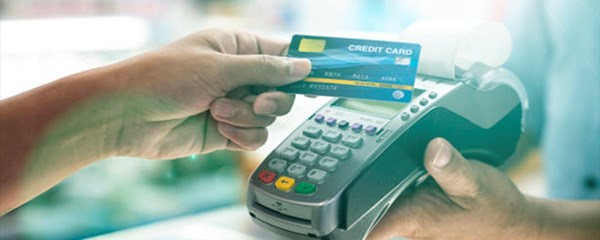
Remember the clunky, manual carbon copy credit card machines? We’ve come a long way, and payments continue to grow, shift, and evolve. Swiping a mag strip was customary for many years, then “chip and dip” came along for chip cards. The next evolution is here: contactless cards. No swiping, no dipping—just tap and go!
The Pros and Cons of EMV
The advent of EMV chip cards was a major change in the cards space for credit unions, businesses, and consumers alike. Credit unions needed the ability to provide chip cards, utilize EMV technology, and educate their members about this new payment technology. Businesses had to upgrade to chip-enabled POS terminals. Consumers had to adjust to “chip and dip” when processing payments.
EMV cards have had pros and cons. EMV has greatly increased transaction security and reduced card-present fraud. Merchants who support EMV cards have experienced an 80% decline in counterfeit card fraud. But, EMV transactions are slower to process than mag stripe transactions, and the card must remain in the POS terminal during the transaction.
Moving Forward
Contactless cards aim to combine the security benefits of the EMV chip with the quick convenience of a traditional mag stripe transaction. Thanks to an antenna and a more powerful EMV chip embedded in the card, contactless cards eliminate dipping, swiping, and waiting. They’re like the smartphone of payment cards. At enabled terminals, the user simply holds the card within an inch of the POS terminal. If the terminal is not enabled, the card still could be dipped or swiped.
Member Experience: Top Priority
Early adopters already have reported that they prefer using contactless cards. Transactions are faster, easier, there’s no chance of a card being left behind in the POS terminal, and no “remove card” sound effects are necessary. Contactless cards literally work everywhere by having all possible card functions built in (insert, tap, swipe, or key-entry). These benefits help drive top-of-wallet status.
Get Ready…It’s Already Here
Acceptance of contactless payments is rapidly growing in the U.S. and abroad. In-store payments already are accepted at major retailers, such as Target, Costco, and McDonalds. Because of the ease of use and convenience of quickly tapping to pay at a POS, transaction volume has shifted from cash to contactless cards. With consumers using cash for 26% of all payment transactions, representing nearly $50 billion, financial institutions need to jump on the contactless card bandwagon. A.T. Kearney predicts a lift in card transaction volume up to 30% within three years!*
*Source: Fiserv
Implementing Contactless Cards
Visa and Mastercard each have its own requirements and recommendations for implementation. As issuers, credit unions will have to implement changes for instant issue, as these cards require additional keys and coding during setup. Credit unions also will need new plastics to accommodate the shift.
Educating staff and members alike will be essential. Similar to the “chip and dip” member education campaign, credit unions will need to explain to their members how to complete a contactless transaction, provide examples of where contactless cards are accepted, and emphasize the increased security and convenience of contactless cards. Including information like this in pre-printed inserts and newsletters, and on signage and monitors at the branch, are a few ways to spread the word on how to use contactless cards.
Planning Ahead
To get started, please contact your Account Relationship Manager, or email ARM@synergentcorp.com.
New to Synergent? Please contact Fred Barber, Account Executive, to learn more about this and other services we offer to help credit unions thrive.

